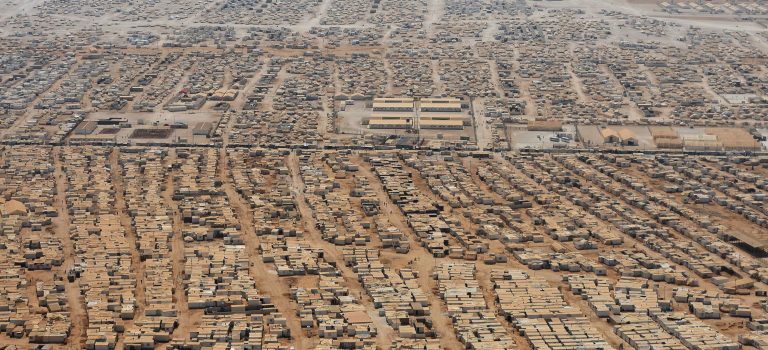A new study that I conducted with Professor Andy Green suggests that preschool education and care has a positive effect on female employment and on educational performance at the age of 15, but it does not help close the gap between poorer students and their peers.
Debates about policy frequently involve identifying social and economic trade-offs. A policy which is designed to boost economic competitiveness may have negative social consequences or, conversely, policies designed to enhance social cohesion may come at a high economic cost. The tensions between economic and social goals seem particularly evident in times of economic austerity. However, social scientists occasionally identify policies which they claim would have clear benefits, both on the economic and social side. Pre-primary education and care (PSEC) is one such policy area.
A new study that I conducted with Professor Andy Green showed clearly that PSEC opens the doors of employment for women. Affordable and accessible pre-school provision frees up mothers of young children to undertake paid work and is thus likely to increase the employment rates of women in general. Raising rates of employment makes an important contribution to raising GDP per capita and improving living standards. At the same time participation in PSEC is held to improve the cognitive abilities of young children. These gains would come at little net costs since they are off-set by the increases in productivity and in tax revenues which will accrue.
We used two datasets: The first is a macro dataset that covers Australia, Austria, Belgium, Canada, Denmark, France, Germany, Ireland, Italy, New Zealand, Norway, Spain, Sweden, Switzerland, the UK, and the USA from 1980 to 2008. We included a large number of determinants of employment. These determinants are: PSEC, expenditure on unemployment (welfare), rigidity of employment, union coverage, coordinated wage bargaining, unemployment benefits’ duration and replacement rate, the rate of house ownership, and prison population. We also included the following variables: The degree of centralization of wage coordination (plant, firm, industry, or economy level), an index of employment protection, migrant stock, the ratio of minimum to average wage, taxes on labour, and union density. These variables did not have a significant effect on total or female employment and were taken out of the equation. The second is a micro-dataset: the Program for International Student Assessment (PISA 2009). Using this data we assessed the impact of attending preschool education on the achievements of 15 year-olds in Mathematics in the same countries mentioned above.
The findings are interesting. An increase in PSEC of 10% (making pre-primary education affordable and accessible) increases female employment by 6.1%. This result is substantial and intuitive since women are the major benefiters of PSEC. For the rest of the variables the impact on female employment is as follows. Expenditure on employment (welfare), rigidity of employment, and union coverage have a negative and significant effect on it, while the impact of coordinated wage bargaining, house ownership, and prison population is positive and significant. By contrast, unemployment benefits’ duration and replacement rate have an insignificant effect.
It is also worth noting that prison population accounts for a large difference in employment rates between the US and the rest of the countries. This happens because inmates are not considered as unemployed and as a consequence are taken out of the statistics. This artificially inflates employment rates in the US. Anecdotally, the prison population of the US is of 743 inmates per 100,000 inhabitants in 2008, and in Sweden it is of 78 inmates. This corresponds to 12.6% difference in total employment rates in favour of the US. Such a higher level of employment is artificial and does not result in higher productivity and it has high social and economic costs related to the need to operate prisons and to incarcerate so many people.
When comparing the social democratic economies with the liberal ones, it is possible to see that they attain high levels of employment through different roads. In the liberal economies flexibility is paramount while in social democratic economies publicly provided PSEC and coordinated wage bargaining play an important role.
On the other hand, using the PISA 2009 dataset, we were able to prove that attending PSEC is positively and significantly related to performance scores on reading at the age of 15 for all social groups. Hence, the cross-national analysis does not support the argument that raising levels of PSEC participation necessarily reduces social gaps in attainment at 15 years of age. Participation in PSEC increases educational performance by similar amounts for children of all social groups in most countries. Social gaps in performance at 15 may only be mitigated by high levels of PSEC provision where children from less advantaged families get more – or better quality – provision.
The important implication of this for policy is that for PSEC to reduce social gaps in school attainment it is not sufficient merely to increase aggregate PSEC participation rates. It would require policies with a substantial bias towards children from disadvantaged families so that they receive more – or better quality – PSEC than children from other social groups. Policy in England seems to be moving in this direction. On Sept 19th 2011 the Department for Education set out plans to extend the existing free entitlement of PSEC to 15 hours per week, which currently applies to all three and four year olds, and to all disadvantaged two year olds (i.e. for those qualifying for free school means or in local authority care). This should increase PSEC participation rates for disadvantaged families. DFE estimates that approximately 140000 two year olds would be eligible to benefit. However, it remains to be seen whether this will bias participation towards this group sufficiently to reduce inequalities in learning outcomes.
This study also appeared on Montrose42’s blog, on Nursery World, and on the page of the Centre for Longitudinal Studies at the IOE.




